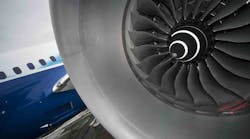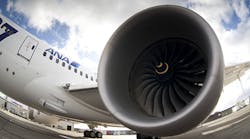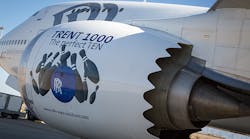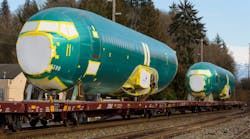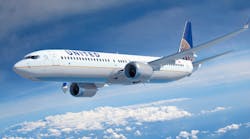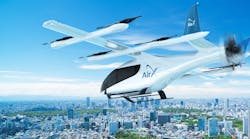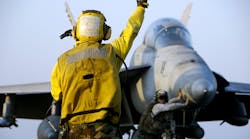Rolls-Royce PLC is set to announce an expanded repair program for its Trent 1000 engines, problems which have forced some Boeing 787 Dreamliner operators to idle the aircraft. The engines have exhibited shorter-than expected service life due to failing turbine blades, which requires the airlines to increase the rate of inspections, which removes the jets from service.
According to reports, Rolls-Rolls will “triple” its capacity for inspecting engines and replacing corrosion-damaged turbine blades.
The Trent 1000 is a high-bypass turbofan engine developed by Rolls-Royce and introduced in 2006. It is one of two engines designs offered by Boeing for its twin-engine, wide-body commercial aircraft, it was the launch engine on both the 787-8 and 787-9 variants. Among the carriers operating Dreamliner aircraft with the Trent 1000 are ANA, Air New Zealand, British Airways, Norwegian Air, Virgin Atlantic, and several others.
The problem with the intermediate-pressure turbine (IPT) blades emerged two years ago when it was reported that ANA had discovered corrosion-related fatigue cracking on blades, which led to a round of inspections and replacement that, according to Rolls’ 2017 annual report incurred $244 million in costs for repairs and compensation.
Rolls recently acknowledged that more regular inspections will lead to higher costs in 2018.
Last month, the European Aviation Safety Administration and the U.S. Federal Aviation Administration reduced the regular inspection interval from 200 flights to 80 flights for 380 Trent 1000 engines. EASA indicated that maintenance had identified cracks on intermediate pressure compression (IPC) rotor seals: “This condition, if not detected and corrected, could lead to in-flight blade release, possibly resulting in reduced control of the aeroplane," according to EASA.
